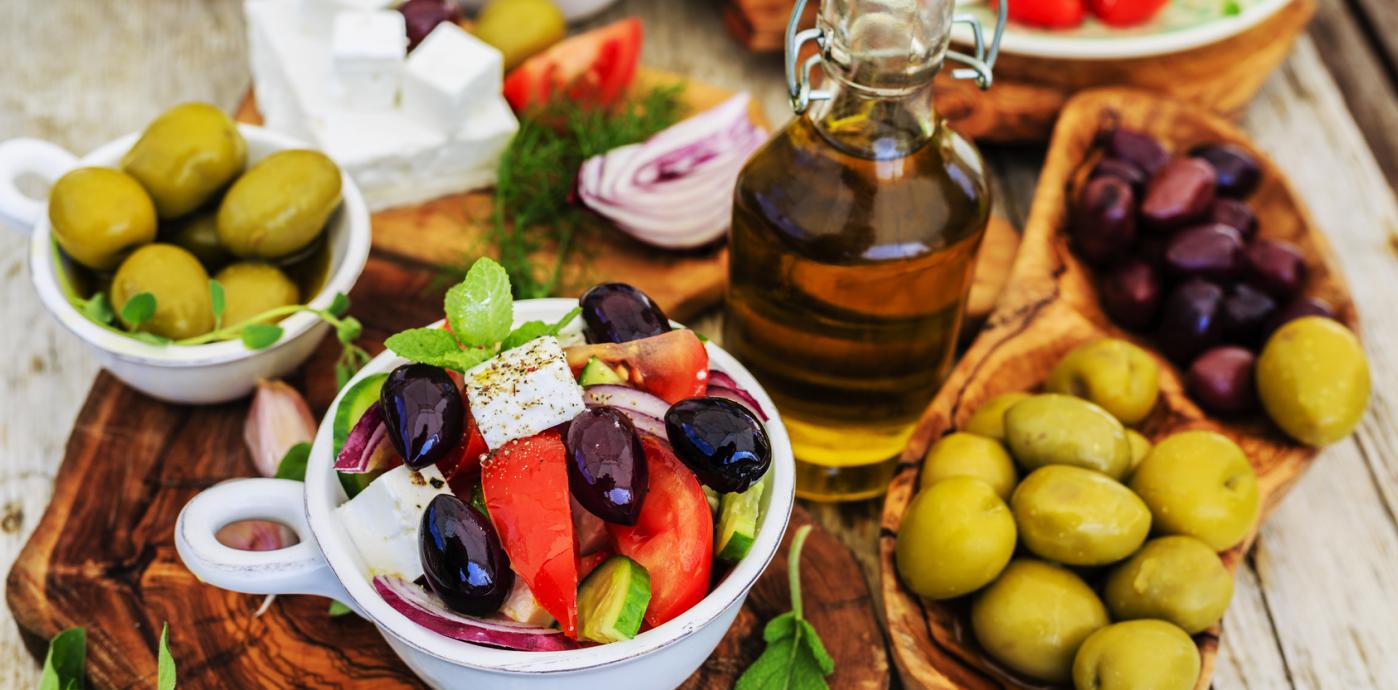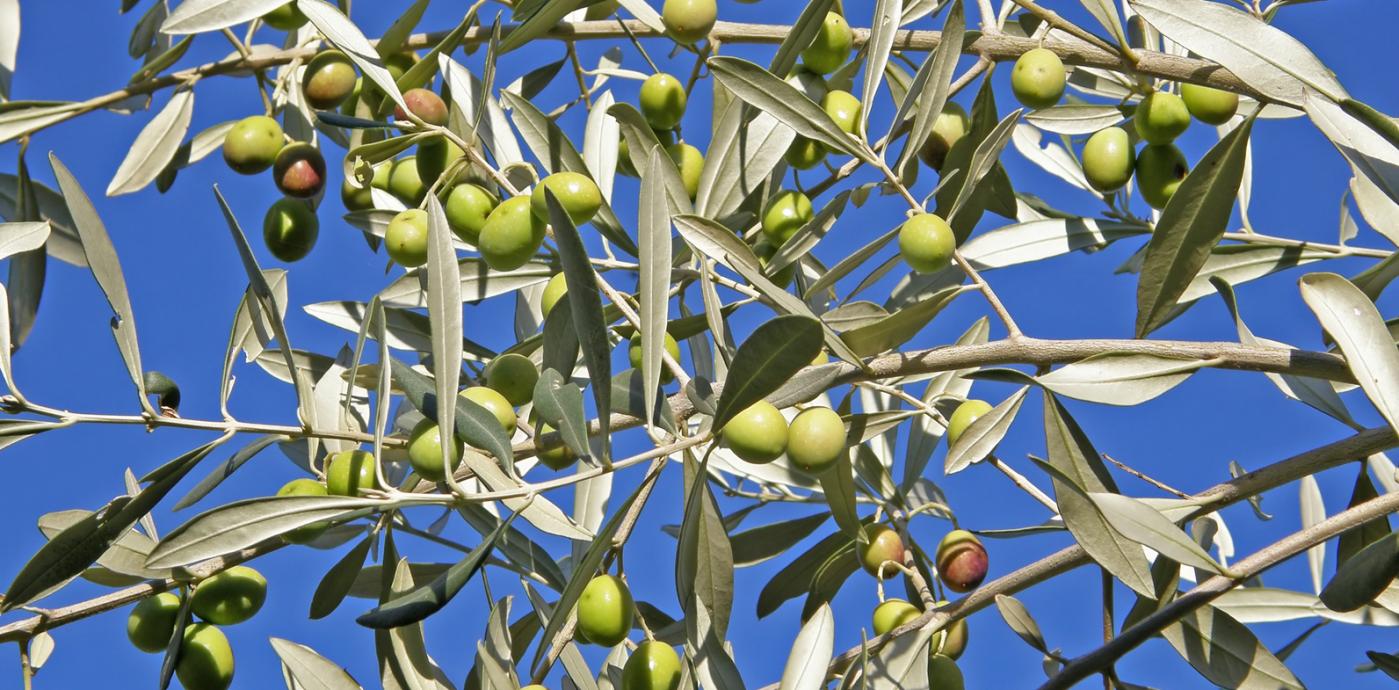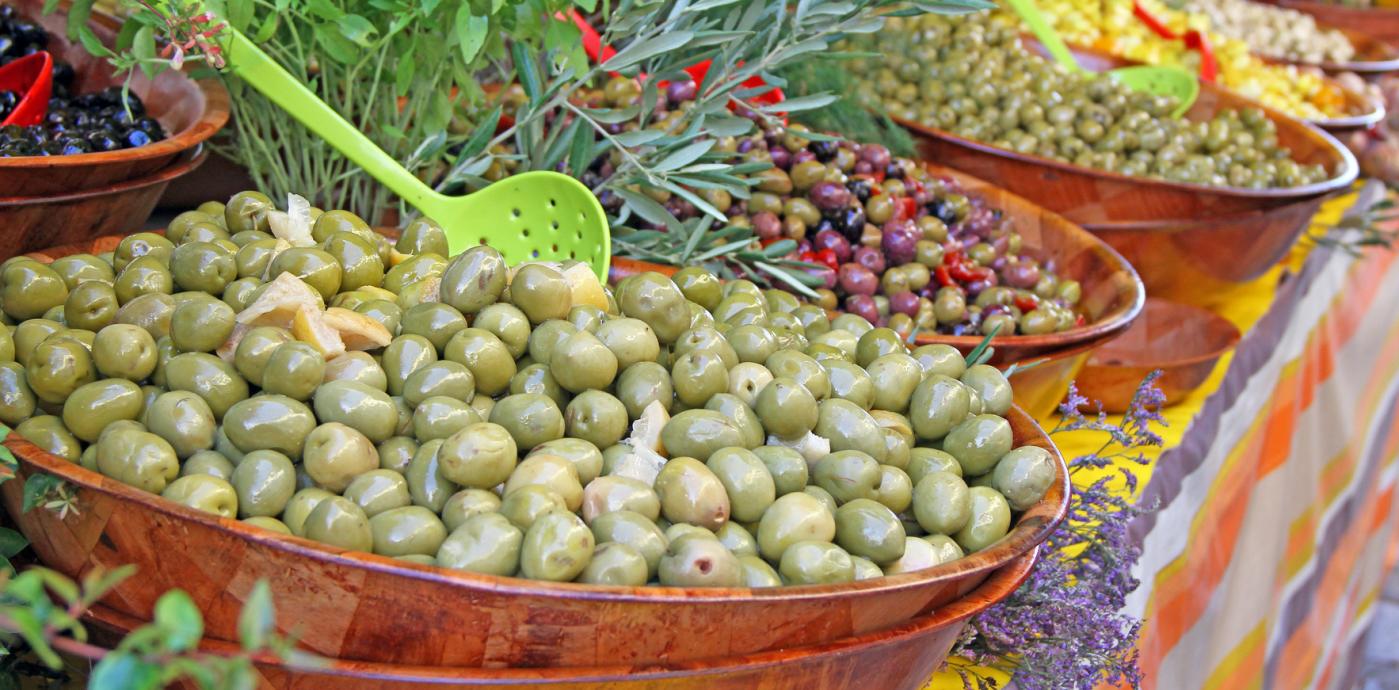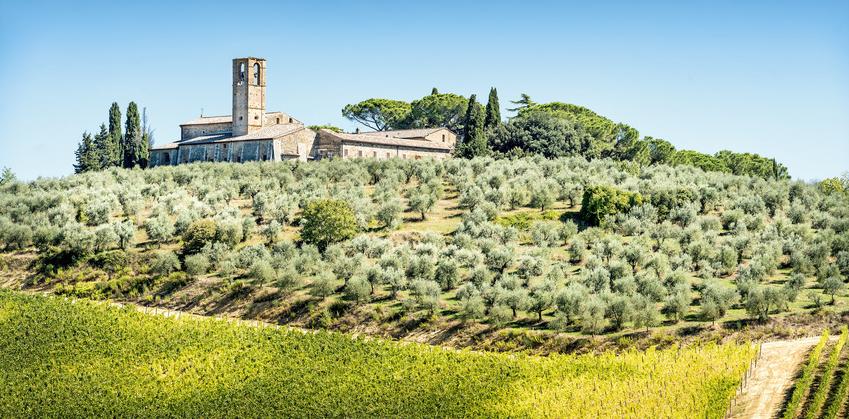Olive trees are among the oldest cultivated trees in history, supporting Mediterranean civilizations for at least 6,000 years. Though it’s speculated that the first wild olive trees were from Syria, it was the Greeks who first cultivated olives. Olive trees have a propensity for warm, subtropical climates, dry rocky limestone soil, and salty sea breezes – all found in abundance along the Greek peninsula and its adjacent islands, such as Crete.
The olive is a drupe, or stone fruit, whose flesh surrounds a pit or stone, inside of which is a seed. Oil makes up as much as 30 percent of the outer flesh, which when pressed turns into olive oil – the juice of the olive fruit. An estimated 90 percent of the world’s olive crop goes to making olive oil. The remainder is harvested for table olives.
Though there are hundreds of olive varieties, most of us know olives as simply green or black. In fact, olives can be black, pink-purple, brown, or green depending on their stage of ripeness when harvested. Green olives are simply unripened olives. If left on the tree, green olives will turn to brown, to vibrant pink-purple, and then to black.
In their natural state, olives are bitter and unpalatable. Thus, before they find their way to your dinner table, olives go through a curing process: brine-cured (in salt water), salt-cured (packed in salt until dry and wrinkly), sun and air-cured, or lye-cured (immersed in a vat of alkaline lye solution, by large commercial olive producers).
According to widely acclaimed Mediterranean food writer, Paula Wolfert, “The texture of a good olive should be firm, not pulpy or mushy, and its flavors should not be overwhelmed with brine or curing. It should neither be too salty nor too bitter. Above all, it should capture and impart the great fresh aroma of its tree.”
Because the majority of olives are cured in salt or a salt solution, they can be salty upon purchase. But don’t let that turn you off. Simply rinse cured olives under cold tap water and put them in a bowl of water. Cover and let soak overnight. Try one the next day. If it’s still too salty, continue soaking until the excess saltiness has disappeared.
There are hundreds of olive varieties. Here are some of the most popular table olives:
Greece
Kalamata: large black olives, among the most well-known Greek olives. Kalamata olive trees are found in the southern Peloponnese, in and around the city of Kalamata.
Konservolia: known by the name of areas producing it, such as Amfissa, Agrinion, Volos, etc.
Italy
Castelvetrano: Sicilian olives are among Italy’s most popular table olive. Bright green and sweet.
Ligurian: a black olive, salt-brine cured from Liguria, the northwestern-most region of Italy, which is close to France’s Niçoise olive region.
Gaeta: Italian purplish-black olive from Puglia in southern Italy. Mild in flavor with a wrinkled appearance, often packed with herbs.
Other Italian olive varieties include Cerignola and Leccino.
France
Niçoise: black olives, harvested fully ripe, small in size, often packed with herbs. From near the city of Nice; an essential ingredient of the Provençal Niçoise salad, as well as of tapenade.
Nyon: petite, jet black, wrinkly olives from the south of France, dry-cured, then aged in brine.
Other French olive varieties include Picholine, Lucques, and Languedoc.
Spain
Arbequina: a small brown olive native to the Catalonia region of Spain.
Gordal: the largest olive grown in Spain. Plump, jumbo, green olives originating in Seville in the Andalusia region.
Manzanilla: green in color, brine-cured, and often stuffed with pimientos (red peppers).
Other Spanish olive varieties include Arauco, Cacereña, Hojiblanca, Verdial, and Vélez-Málaga.
Morocco
Beldi: black, wrinkly, salt-cured olives.
Turkey
Gemlik: from the Zeytinbagi region of northern Turkey, small to medium in size and jet black.
For some tasty ideas for trying all these olive varieties, check out our 12 Great Ways to Use Olives.
Want biweekly Med Diet information and recipes in your Inbox? Sign up for our Fresh Fridays newsletter by clicking the Subscribe button at the bottom of this page!
Join the Make Every Day Mediterranean Club Facebook group for additional information and support.









